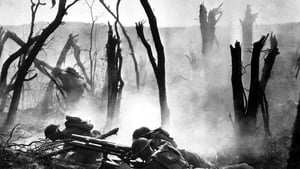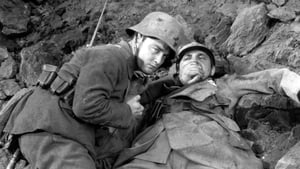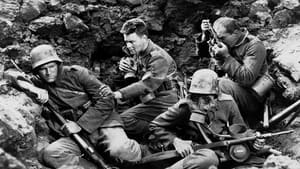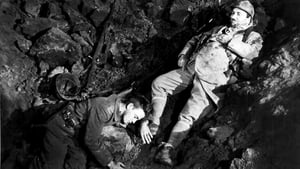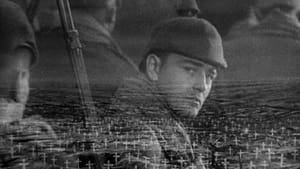Video Sources 0 Views
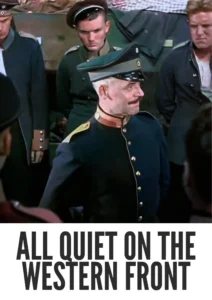
Synopsis
All Quiet on the Western Front (1930) Colorized: A Devastating Anti-War Masterpiece, Reimagined

Witness the horrors of war through fresh eyes with the colorized HD version of All Quiet on the Western Front (1930). Based on Erich Maria Remarque’s seminal novel, this film delivers a powerful anti-war message, showcasing the brutal realities faced by young German soldiers during World War I. Rediscover this landmark film and its enduring relevance.
All Quiet on the Western Front (1930) Movie Storyline: The Loss of Innocence in the Trenches
All Quiet on the Western Front follows a group of young German schoolboys who are persuaded by their jingoistic professor to enlist in World War I . Filled with patriotic fervor, they eagerly march off to the Western Front, only to be confronted with the gruesome realities of trench warfare .As they experience the physical and psychological trauma of combat, their idealism quickly fades, replaced by disillusionment, fear, and a desperate struggle for survival . The film poignantly depicts the loss of innocence, the futility of war, and the camaraderie forged in the face of unimaginable hardship . The final scene depicts a soldier, perhaps the protagonist, reaching for a butterfly, only to be killed .
Cast of All Quiet on the Western Front (1930): Lew Ayres Leads a Powerful Ensemble
- Lew Ayres as Paul Bäumer
- Louis Wolheim as Stanislaus Katczinsky
- John Wray as Himmelstoss
- Arnold Lucy as Kantorek
- Ben Alexander as Franz Kemmerich
Genre and Themes: An Anti-War Epic That Transcends Time
All Quiet on the Western Front is a war drama and anti-war film that explores themes of loss, disillusionment, the horrors of war, and the importance of empathy and understanding.
All Quiet on the Western Front (1930): A Groundbreaking Film That Shocked the World
Released in 1930, All Quiet on the Western Front was a box office success and garnered critical acclaim, winning the Academy Award for Best Picture and Best Director . However, its pacifist message also made it controversial, and it was banned in some countries for its perceived anti-German sentiment . Despite the controversies, the film remains a powerful and enduring testament to the futility of war .
The Colorization Process: Enhancing the Realism of a Harrowing Vision
This colorized version of All Quiet on the Western Front (1930) was undertaken by [Your Company Name], a dedicated team of film preservationists committed to making classic films accessible to new audiences. Our goal was to enhance the film’s visual impact while remaining true to its original intent.Our Process:
- AI-Driven Color Palette Generation: We used state-of-the-art AI algorithms to analyze the grayscale tones of the original film and generate realistic color palettes.
- Historical Accuracy Research: Our team consulted with historians and military experts to ensure the accuracy of the uniforms, settings, and weaponry depicted in the film.
- Manual Color Correction and Refinement: Skilled colorists meticulously reviewed each scene, making adjustments to ensure consistency, realism, and emotional impact.
- Preserving the Original Cinematography: We took great care to preserve the film’s original lighting, composition, and visual style, ensuring that the colorization process enhanced, rather than detracted from, its artistic integrity.
Technical Details: Download All Quiet on the Western Front (1930) in Colorized HD
- Original Release: 1930
- Director: Lewis Milestone
- Based on the novel by: Erich Maria Remarque
- Starring: Lew Ayres, Louis Wolheim, John Wray
- Runtime: Approx. 152 minutes (original), shorter versions exist
- Language: English
- Download Format: MP4
- Resolution: HD (1080p)
- Compatibility: Compatible with modern devices
- Audio: Restored and enhanced soundtrack
Why Watch the Colorized Version of All Quiet on the Western Front (1930)?
Experience the visceral power of All Quiet on the Western Front like never before. The colorization brings a new level of realism to the film’s harrowing depictions of war, making its anti-war message even more impactful. This is a unique opportunity to connect with this classic film on a deeper level and gain a greater understanding of the human cost of conflict.
Download All Quiet on the Western Front (1930) Colorized in HD Today!
FAQs
Q: What is All Quiet on the Western Front (1930) about?
A: All Quiet on the Western Front is an anti-war film that depicts the experiences of young German soldiers during World War I.
Q: Is the colorization historically accurate?
A: We have strived for historical accuracy, consulting with historians and military experts to ensure the authenticity of the uniforms, settings, and weaponry.
Q: What makes this colorized version special?
A: This version has been carefully colorized to enhance the film’s emotional impact and visual realism while preserving its original artistic integrity.
